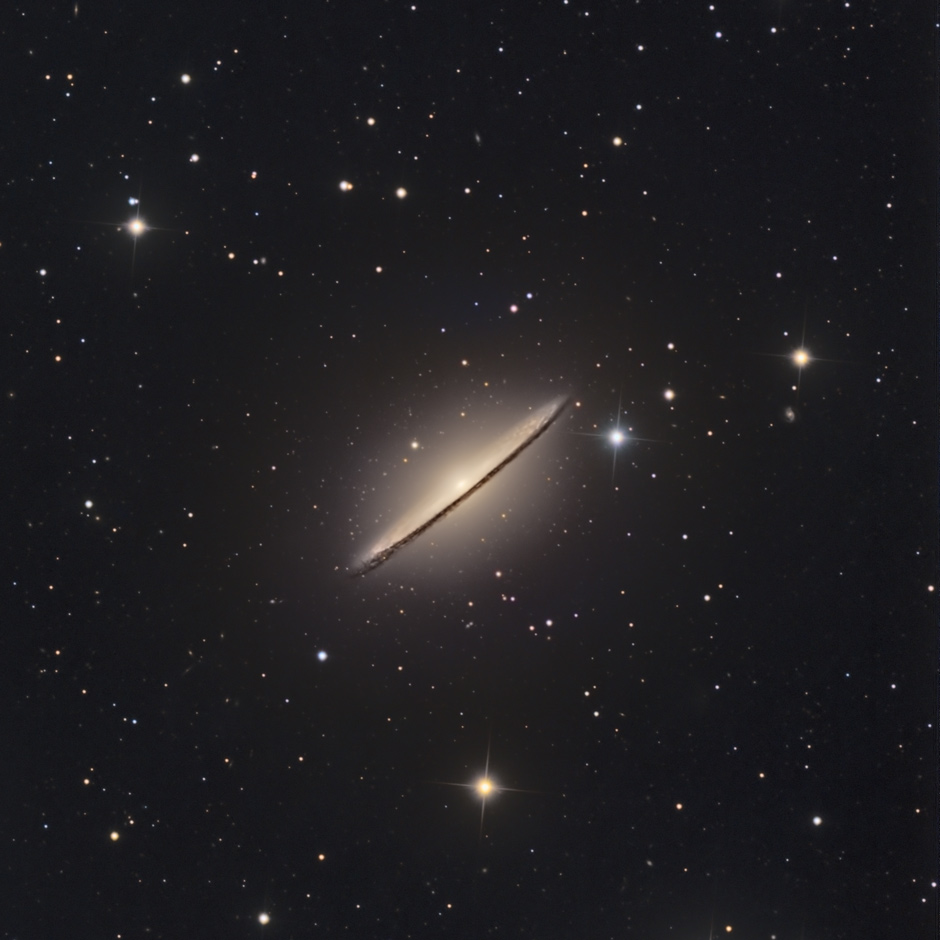

M104 is a magnitude 8 galaxy in Virgo, presenting to us almost edge-on. It is an interesting galaxy! Although only about a third of the diameter of our Milky Way, it has a
mass of about 800 billion suns, which is about half the mass of the Milky Way. It is thought to have at its core one of the most massive black holes of any galaxy in our galactic neighborhood. Also,
it has a very large and bright central bulge, compared to many galaxies (including our Milky Way, which is thought to look something like
this when viewed edge-on).
As seems to go along with having a very large central bulge, M104 has a large number of globular clusters; if you look closely,
you will notice that there are a lot more "stars" near the galaxy than in the rest of the photo; the faint, slightly-fuzzy "stars" are mostly globular clusters around M104.
And finally, while it is generally thought to be a spiral galaxy, some authorities believe it is a lenticular galaxy.
The dark band seen in the image (at the edge of the "brim" of the sombrero) is a dust lane; galaxies contain a lot of dust (which is much of what you see in dark sky photos of the
Milky Way.
It is estimated to be approximately 28 million light years from earth, and approximately 40,000 light years in diameter.
Copyright 2021 Mark de Regt